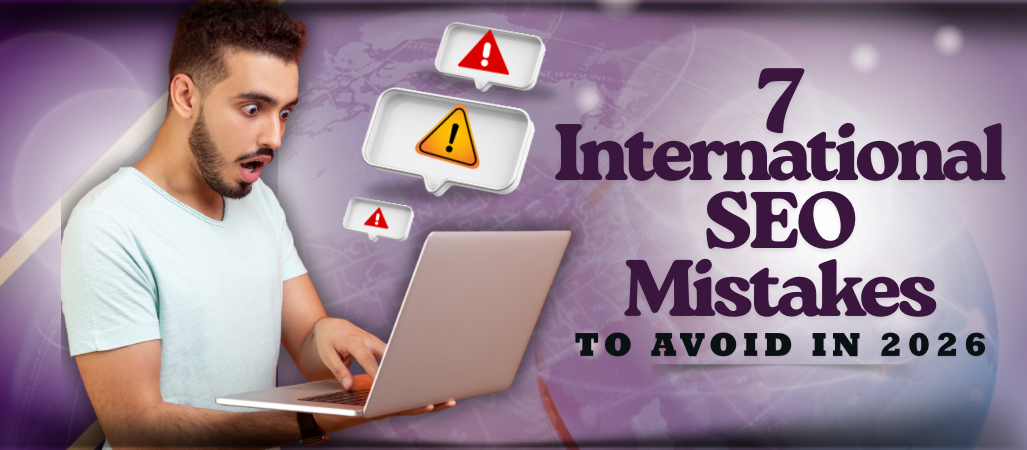Why 2026 Will Make or Break Your Global SEO
International SEO in 2026 isn’t the same game it was a couple of years ago. It’s now a precision-driven, AI-aware discipline, and those old “translate and rank” shortcuts? They’re a growth killer. Google’s ranking systems — now powered by AI, the Helpful Content System, and AI Overviews — have become far more regional in how they read search intent. In practice, this means you’re not just competing with other sites anymore; you’re also up against search engines directly answering queries inside rich snippets and AI summaries before a user ever clicks a link.
And the numbers make the picture even clearer:
- 94% of clicks go to organic results ([AIOSEO,2025]
- 20.5% of global users use voice search, with “8.4B voice assistants” active worldwide ([DemandSage,2025]
- The “average #1 ranking page” sits at roughly 1,890 words and tends to pull in far more backlinks than shorter pieces ([Backlinko, 2025]
That’s why this guide focuses on common international SEO mistakes and how to fix them, all built around global SEO best practices 2026 that actually work in the current search climate.
Mistake #1: Misusing Hreflang Tags — Sending the Wrong Page to the Wrong Marke

The Problem
Hreflang tags sit at the core of multi-regional SEO — they’re what tell search engines which language-region version of your page belongs where. Simple enough in theory, but here’s where it goes wrong: if those tags are missing, pointing the wrong way, or just don’t match what’s actually on the page, you’re basically inviting the wrong audience in. That means high bounce rates, less engagement, and search results that stop making sense for the people you actually want to reach.
And it’s not just about who sees the page. Indexing can take a hit too. When search engines can’t decide which version to show, you’re left with duplicate content problems and a big drop in visibility for the versions you actually spent time localizing.
How to Fix International SEO Errors
Forget the “set it and forget it” mindset — hreflang needs active babysitting:
- Run an audit of hreflang setup with Google Search Console → International Targeting or a crawl in Screaming Frog.
- Double-check every hreflang code against the content it’s supposed to serve.
- Keep your XML sitemaps updated with every language-region variant.
- Watch for canonicalization errors in international SEO — canonicals should point to the correct localized page, not some generic fallback.
- Any time you migrate or tweak templates, check hreflang integrity again.
Pro Tip: Don’t just drop hreflang in and call it a day — pair it with multilingual keyword research tips for international SEO so you’re hitting not only the right language but the exact search intent in each market.
Mistake #2: Auto-Redirect Overkill — Killing User Choice
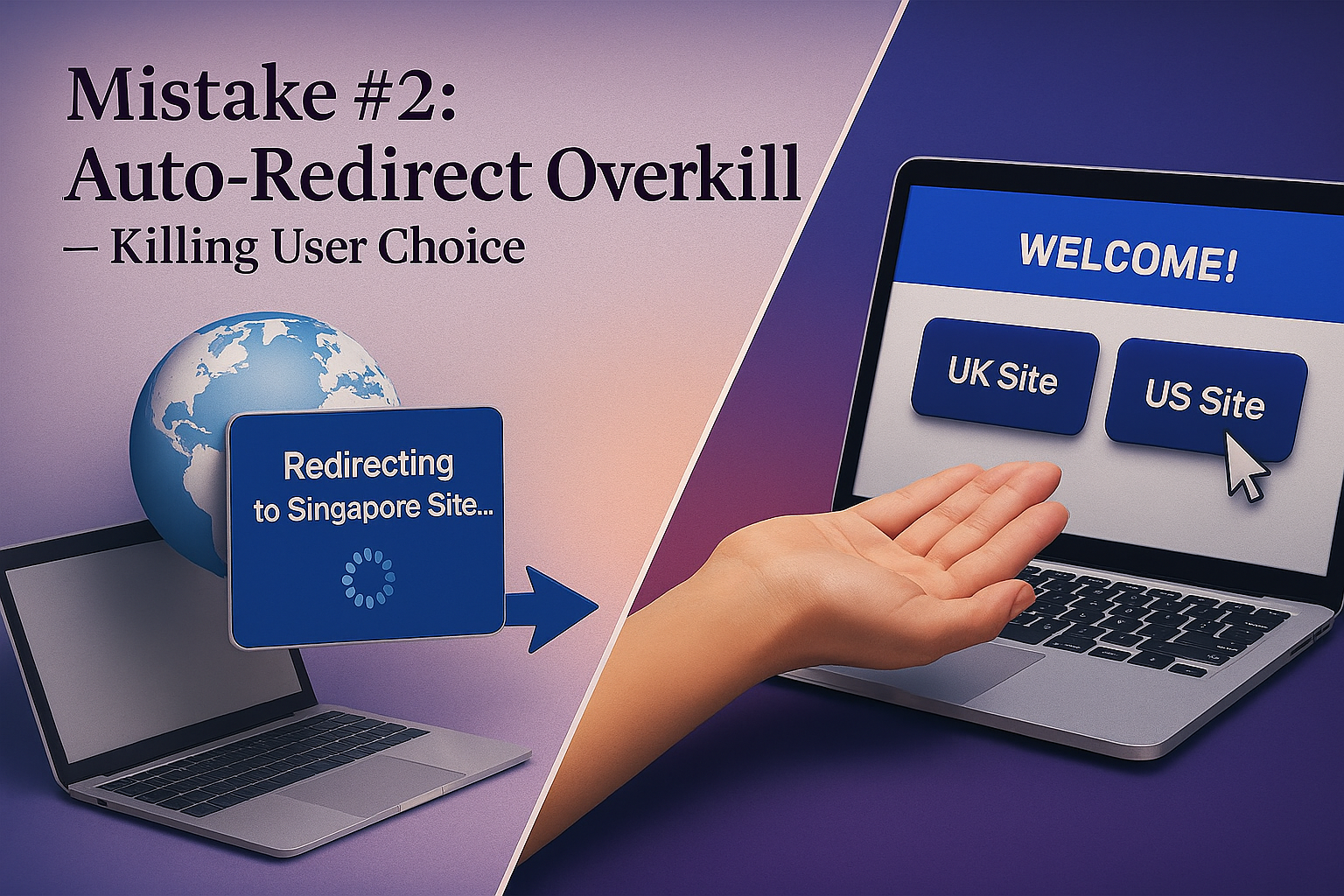
The Problem
IP-based auto-redirects… they sound like a good idea when you first think about them. Someone who visits from Singapore? Send them to the Singapore site. A click from the UK? Straight to the UK version. Easy. Except it’s not.
In real-world SEO, this neat trick has a nasty side effect. Search engines can get stuck — they can’t always crawl the alternate versions you worked so hard to build. And the people using your site? Some will want a different version than the one their IP forces on them. They don’t get that choice. You lose control of the experience, they lose patience.
That’s when you see the signals drop — dwell time slides, bounce rates spike, and valuable content ends up invisible in certain regions. Give it enough time and your presence in local search results starts to fade, even in markets you should dominate — a common pitfall for businesses running multi-regional SEO campaigns without considering user choice.
How to Fix
Forget the “one-size-fits-all” redirect. Let people choose. Add a language/region selector that’s always visible. If you want to be helpful, fine — use gentle prompts to guide them to the right version. But don’t trap them there.
Behind the scenes, make sure Googlebot has full access to every localized page. And don’t assume it’s all working — run a quick VPN test and see your own site from another country’s perspective. You might be surprised.
Pro Tip: Look at your session duration data before and after you tweak the setup. You’ll usually find that removing the forced redirect keeps people around longer — and that’s the engagement signal search engines actually notice.
Mistake #3: Ignoring Local Search Behavior — One Keyword Strategy for All
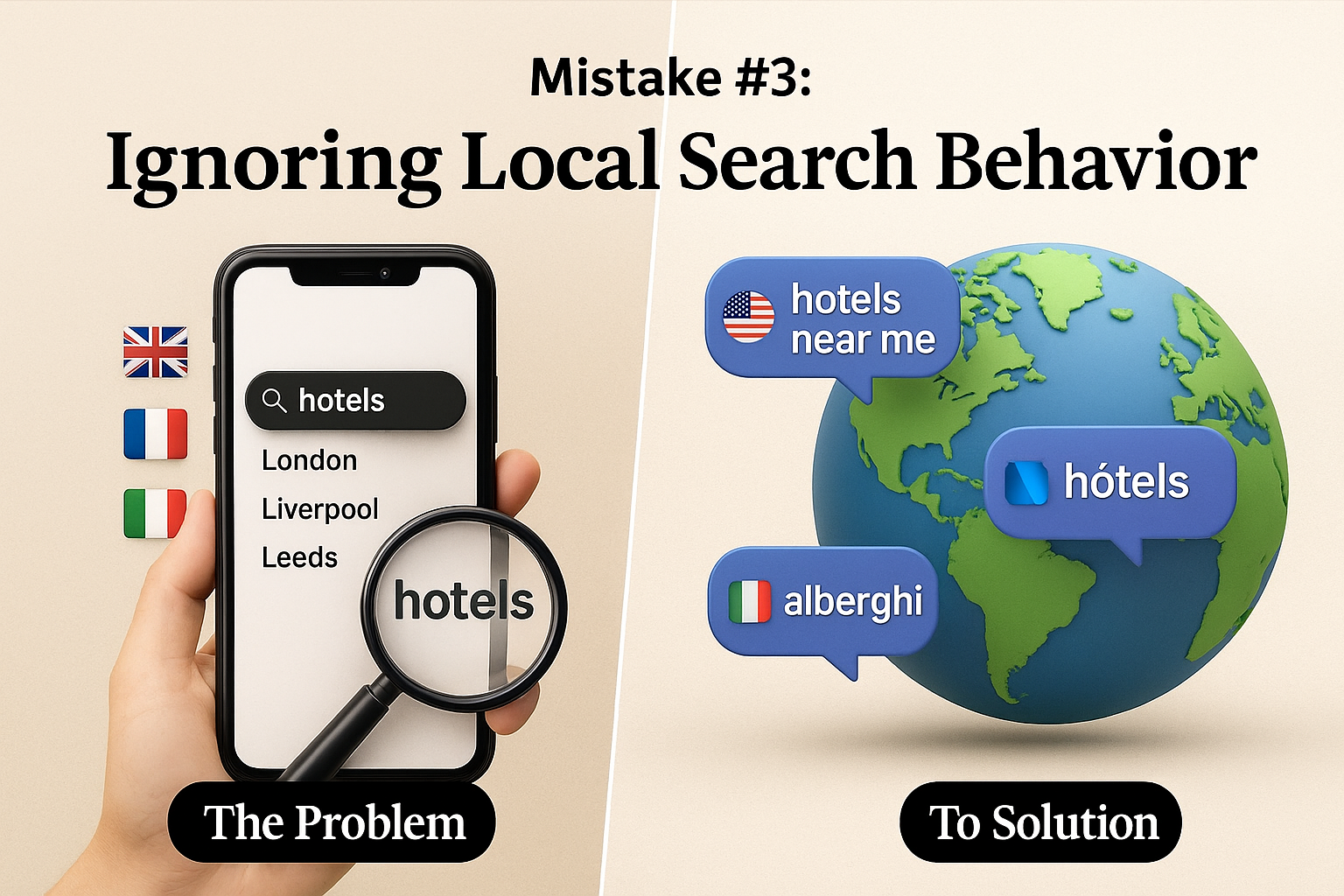
The Problem
You’d think one keyword strategy could cover every market. It can’t. What people type — or say — into search changes a lot from country to country. Culture, language, even little behavior patterns mean the same word might be gold in one place and useless in another.
Stick with a single approach and you’ll run into the same issues over and over: showing up for terms nobody cares about, missing the phrases that actually bring traffic, and failing to align your local seo services with how people actually search in each region — leaving space for competitors who understand those differences to win local SERPs.
Multilingual Keyword Research Tips for International SEO
First step? Conduct geo-specific keyword research in Google Keyword Planner. No shortcuts.
Keep an eye on seasonal search patterns in Google Trends — people don’t search the same way in July as they do in December.
Use long-tail, market-specific keywords — something like “how to do multilingual keyword research for SEO” works better than just “multilingual SEO.”
Don’t forget how people talk to their devices. Slip in voice queries such as “how do I fix hreflang tags for global SEO?” so you’re ready for assistants and smart speakers.
Pro Tip: Speak the same search language as your audience. Literally. That’s what drives click-throughs — and more importantly, conversions.
Mistake #4: Neglecting Local Content & Culture
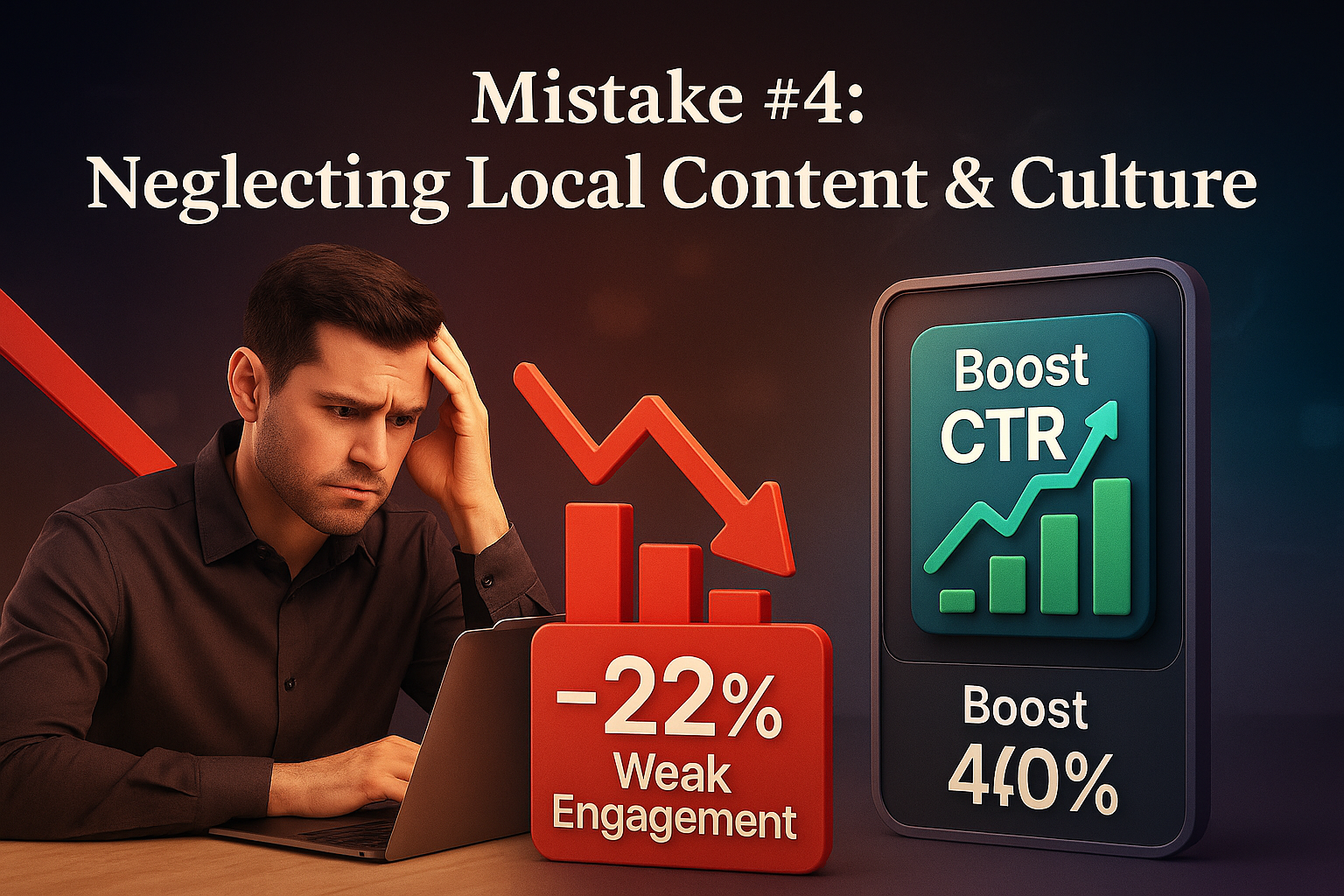
The Problem
You can have the technical SEO nailed down, every box ticked, and still watch your content fall flat. And here’s the thing — it usually comes down to cultural relevance. People respond to brands that get their world. That means the events they care about, the little language quirks that make something feel familiar, even the unspoken customer expectations in that region.
Skip that layer, and your brand starts feeling distant — like you’re talking *at* the audience instead of *to* them. Trust slips, and in competitive markets, that’s the start of a slow slide out of the conversation.
How to Fix
Don’t overcomplicate it. Line up editorial calendars so they match the seasons, holidays, and moments that matter locally. Adjust messaging, examples, and CTAs so they’re not just translated, but actually sound like they belong. And make sure the visuals follow suit — locally relevant visuals in the right formats can do more than any single headline tweak.
Pro Tip: Even if you’re in B2B, bringing in regional context changes how people perceive you. It adds authenticity, and authenticity builds brand authority faster than another layer of keyword optimization ever will.
Mistake #5: Duplicate Content Across Regional Domains

The Problem
If you’re publishing identical or almost identical content on different regional domains, you’re basically telling search engines, “Here, you figure it out.” That’s not how you win rankings. Google doesn’t like having to choose between near-clones — it can split ranking signals, apply duplicate content filters, and in the end, neither version gets the visibility it should.
When that happens, your organic reach shrinks. You’ve made it harder for Google to decide which page deserves the top spot, and often, the answer will be… neither.
How to Fix
The solution isn’t complicated, but it does take effort. Change at least 20–30% of page content for each market so every version stands on its own. Go beyond just text — localize currency, measurements, and policy references so they match what people expect in that region. And to give each page more weight, add market-specific FAQs that actually answer local questions. This kind of international seo services approach ensures each site version earns its own rankings instead of competing with itself.
Pro Tip: You’d be surprised how much a few thoughtful content tweaks can improve both SEO uniqueness and the trust people have in your brand.
Mistake #6: Technical SEO Gaps — Speed
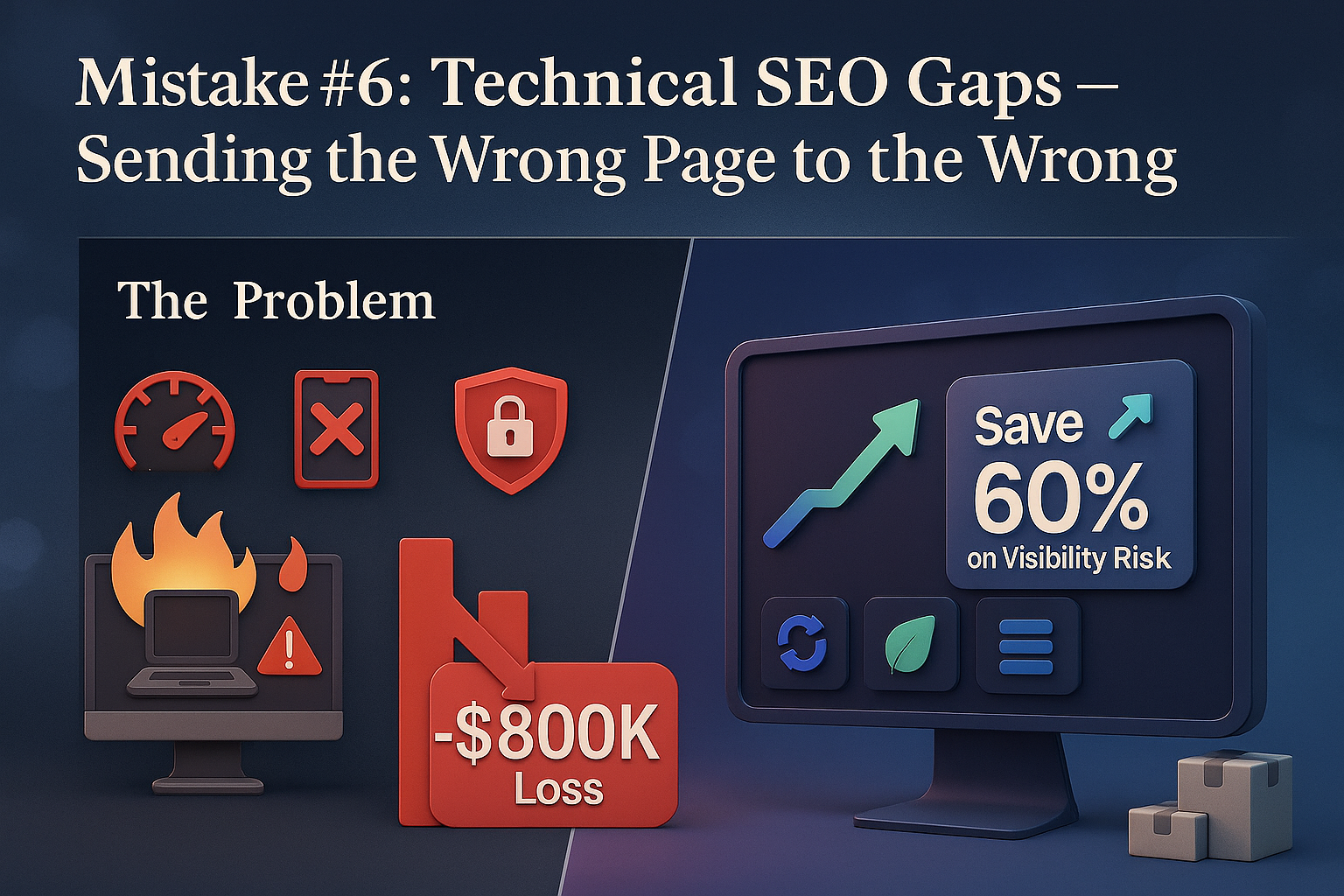
The Problem
Look, technical SEO isn’t a “set it and forget it” thing. Not anymore. With Core Web Vitals and mobile-first indexing baked into how rankings work, a slow site or clumsy mobile layout can quietly crush your visibility. It’s not just search engines that react to it — people feel it instantly. They click away.
And here’s the bit I must forget: data privacy rules like PDPA, GDPR, CCPA. Miss one of those, and you’re not just risking a traffic dip. You’re risking fines. Public trust? Gone in a second.
How to Fix
Start with speed. Use regional CDNs or host locally so your pages aren’t dragging halfway across the globe before loading. Trim down image formats and sizes— a few heavy files can ruin your load time. Don’t just run one test and call it a day. Check Core Web Vitals for each market separately. Numbers can look fine overall and still hide weak spots.
And compliance… treat it as non-negotiable. Follow PDPA, GDPR, CCPA wherever you operate. It’s about more than avoiding legal trouble — it’s proof you take user data seriously.
Pro Tip: Fast sites keep people around. And the longer they stick, the better your chances they’ll click, sign up, or buy.
What does that look like?
- Posting Instagram content that makes someone stop mid-scroll
- Letting automation handle the repetitive marketing work so you can focus on the food
- Teaming up with the right *best digital marketing company in Singapore* to tie it all together
If you’re serious about leading the pack, work with an affordable social media company in Singapore or a 360-degree digital marketing services provider who understands the local flavour and how to sell it online.
Hungry for growth? Don’t wait for the competition to move first. Start now—and make every click count.
Mistake #7: Neglecting Local Backlink Strategy
The Problem
Backlinks still matter — a lot. But if they’re not from sources inside the market you’re targeting, you’re missing a big ranking signal. Search engines tend to trust local authority more than links from elsewhere. Rely only on global backlinks and your local SEO strength fades. It’s like entering a hometown race when nobody in the stands knows your name.
How to Build Local Links When Expanding Globally
Show up where the local audience already is. Get featured in regional publications, add your business to country-specific directories people actually use, and work with influencers or partners in that area. These links bring context along with the click.
Pro Tip: Country-code TLD backlinks send one of the clearest “we belong here” signals you can give search engines.
The 2026 Twist: Voice Search & AI Assistants
Voice search and AI assistants aren’t “the next big thing” anymore — they’ve already arrived and are running the show. In 2026, we’re looking at more than 8.4 billion voice-enabled devices in active use. That’s not a niche. That’s the majority of connected devices people touch every day. And between 20–25% of global search queries are now spoken, not typed.
When you factor in Google Gemini, Siri, Alexa, and ChatGPT Search — all built into people’s phones, homes, and even cars — it’s easy to see how your content might be heard before it’s ever clicked.
This also reshapes how ai automation services are discovered and positioned online, since these systems favor clear, conversational results that match the way people speak. This changes international SEO in a big way. Typed queries are still short and keyword-focused (“best SEO company Singapore”), but voice queries stretch out, sound natural, and carry intent (“Which is the best SEO agency in Singapore for small businesses?”). AI assistants lean toward direct, clear, and verified answers. If your content isn’t built with Answer Engine Optimization (AEO) in mind, you can still rank in traditional SERPs and… never show up when someone actually asks the question out loud.
Why This Matters for International SEO
Local nuance is amplified — what someone asks in one region isn’t always how they phrase it somewhere else. A UK user might say, “Where can I find affordable local SEO services near me?” while a UAE user could go with, “Which SEO agency in Dubai works with international clients?”. Same topic, totally different wording — and they each deserve an answer that fits their context.
AI assistants prioritize trust signals — things like structured data, authority backlinks, and keeping your content accurate and fresh. Without them, you’re far less likely to be picked as the answer.
Voice search is mobile-first by default — if your pages take too long to load or the mobile UX feels clumsy, you’re often out of the running before the assistant even finishes the query. That’s why Essential SEO Strategies Every Startup Should Implement must also factor in voice search readiness, mobile performance, and localized content structure to stay competitive globally.
How to Optimize for Voice Search & AI Assistants in 2026
You can’t just dump keywords into a page and hope AI assistants pick you up. You’ve got to make it sound like the way people actually ask questions. That means weaving natural language into your content — full Q\&A style, not just a phrase here and there.
On the tech side, get FAQ schema, HowTo schema, and Speakable schema in place so assistants know exactly how to parse and serve your answers. Then, aim for conversational long-tail keywords like “how to fix hreflang tags for global SEO” or “how to build local backlinks for international rankings” or even “How to Optimize Your Website for Voice Search & AI Assistants.” That’s the kind of language someone will literally speak into their phone or smart speaker.
When you’re writing answers, give them a quick, tight 30–40 word summary, then go into detail. AI assistants almost always grab the short version first.
Don’t forget to localize your voice search content — a British user, an American, and someone in Dubai might all ask for the same thing in totally different words, currencies, and measurements. And here’s the part most people skip: test it yourself. Fire up Google Assistant, Siri, Alexa… see what they say. If it’s not your content being read aloud, you know where the holes are.
Pro Tip: Voice search optimization is the bridge between SEO and AEO. Snagging a featured snippet is half the job, but if you don’t nail conversational context and schema, the AI result will go to your competitor.
Conclusion
In 2026, International SEO has moved far beyond a list of technical tweaks. It’s about precision, cultural awareness, and quick adaptation. The strongest brands don’t treat Singapore, the UK, the US, and the UAE as copies of one another. They speak to each audience in its own language, style, and search behavior — from Singapore’s multilingual consumers to the UK’s tradition-driven market, the fast-evolving AI-driven SERPs in the US, and the distinct buying patterns in the UAE.
Missed hreflang tags, skipped local backlinks — these aren’t tiny errors. They’re moments where you fail to connect. Fixing them isn’t just about climbing a rank. It’s about building a presence that feels local wherever it appears. In 2026, technical skill and cultural fit aren’t the edge. They’re the starting point for any brand aiming to dominate globally.

